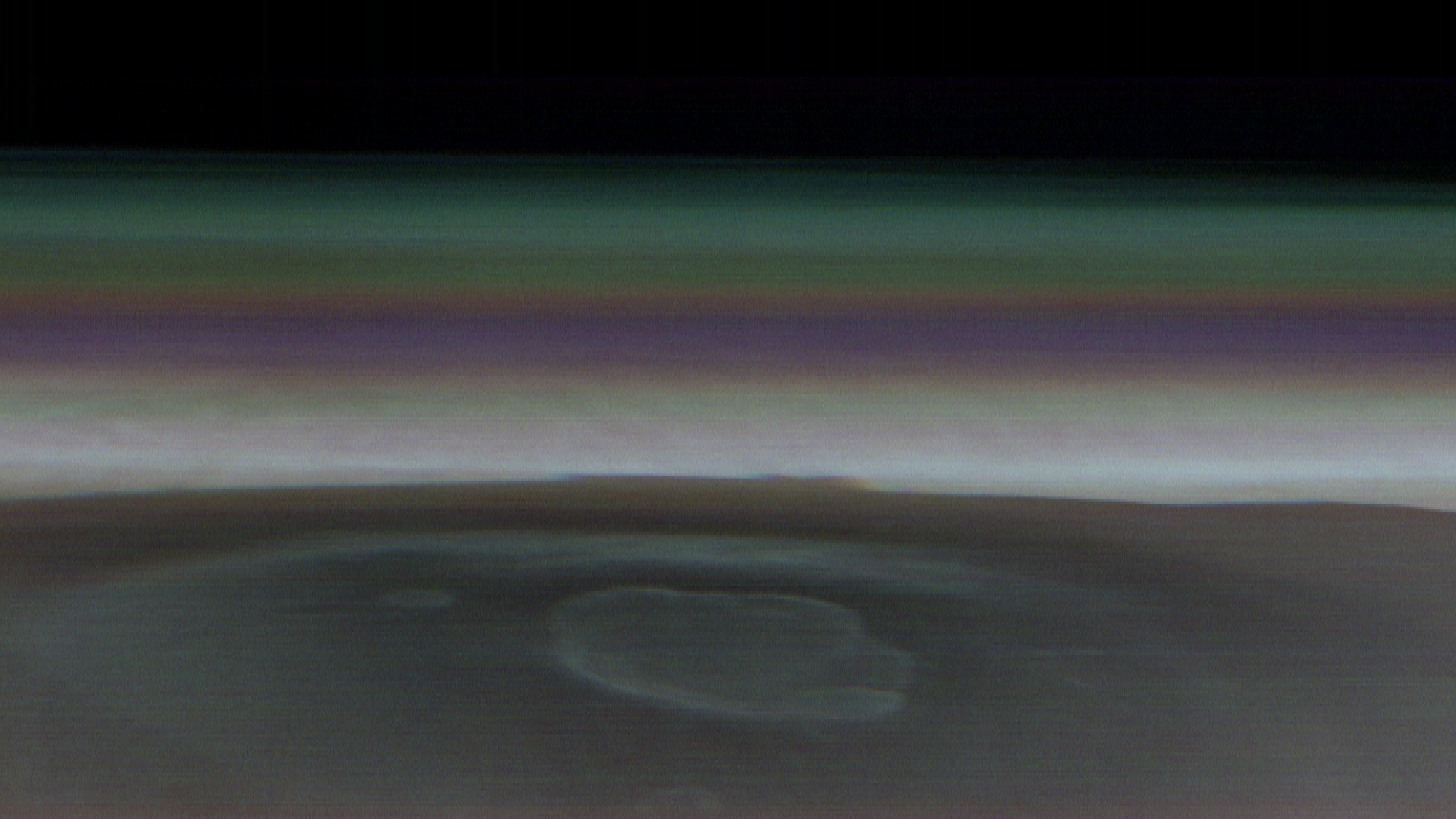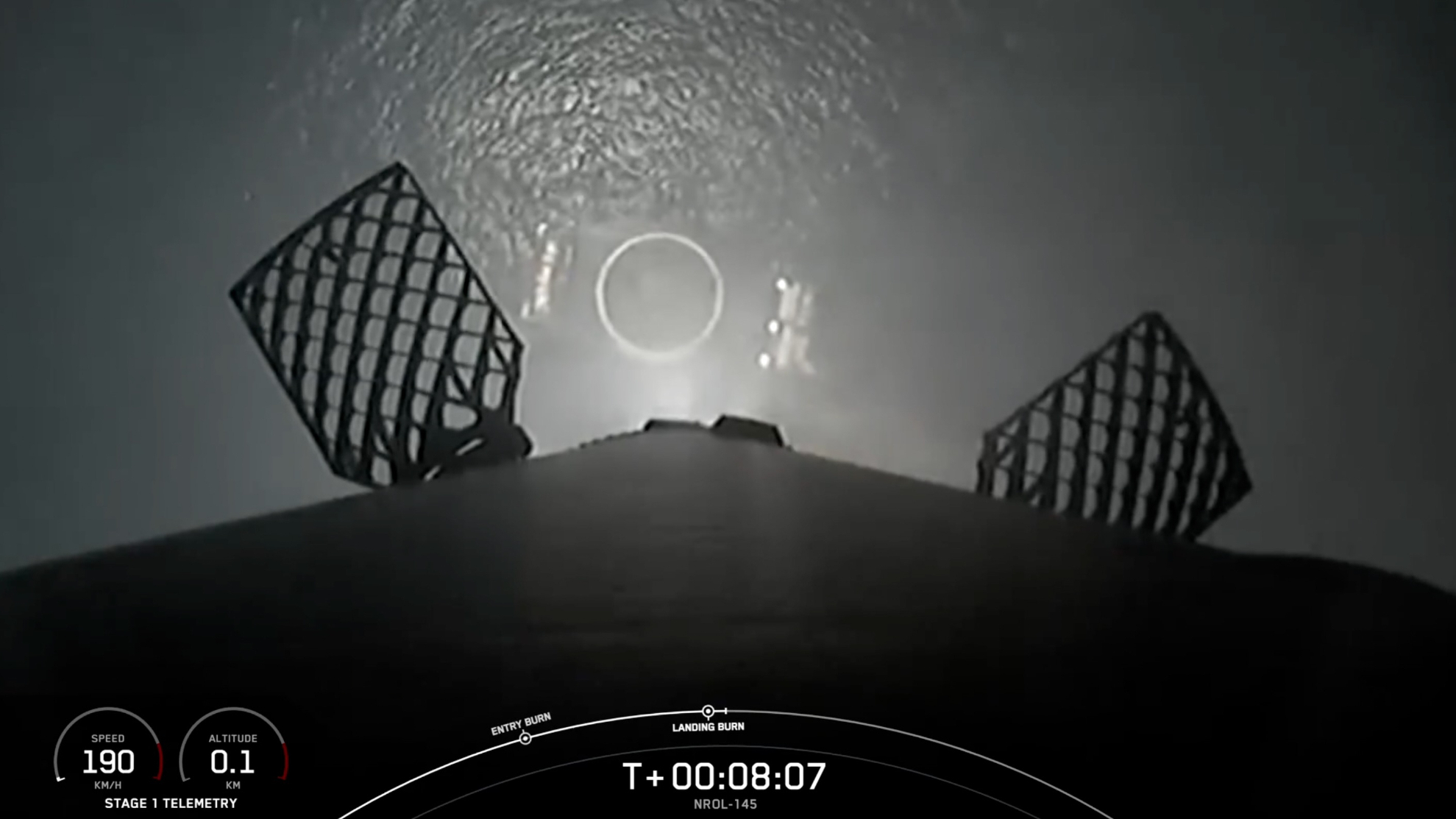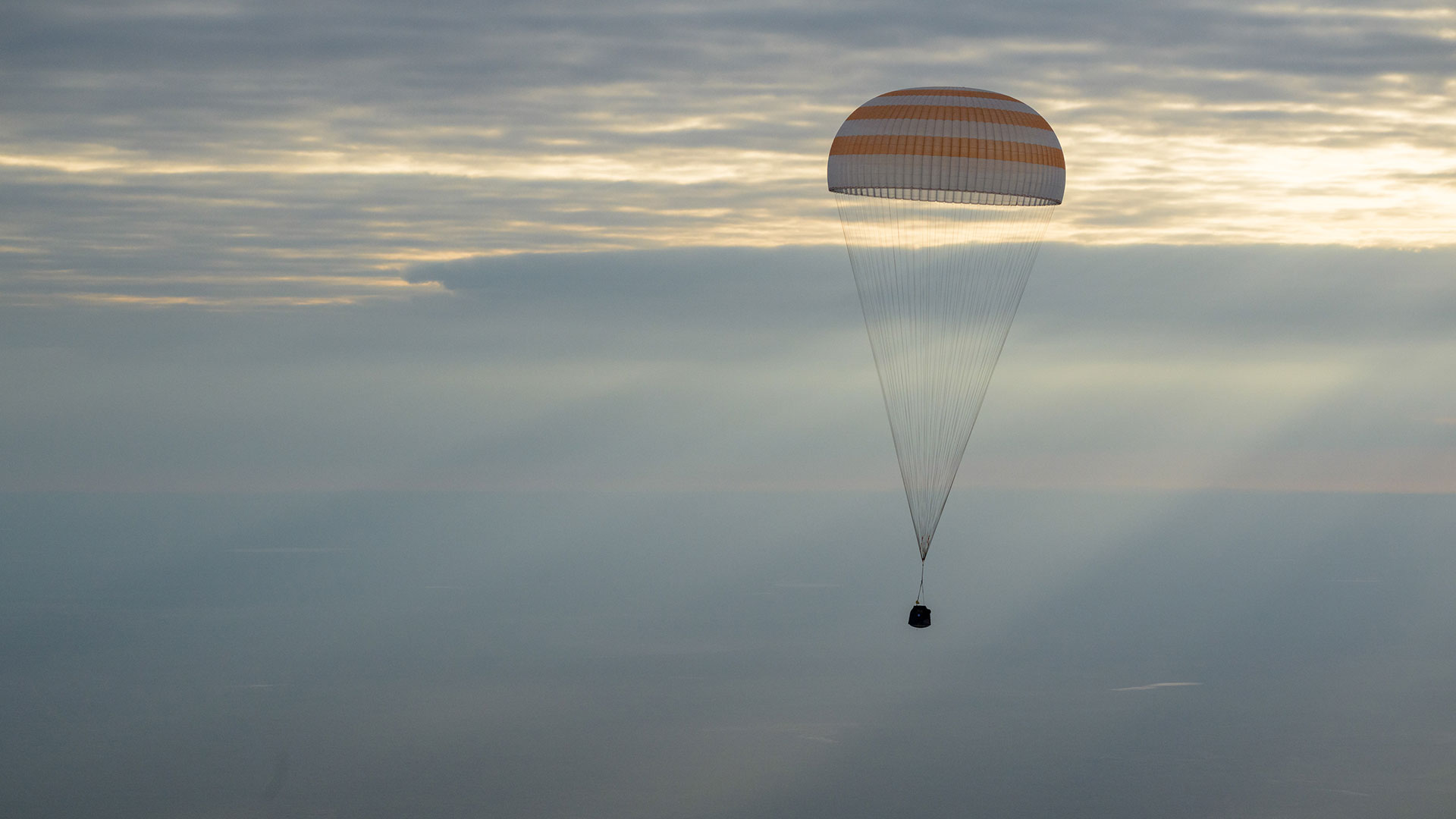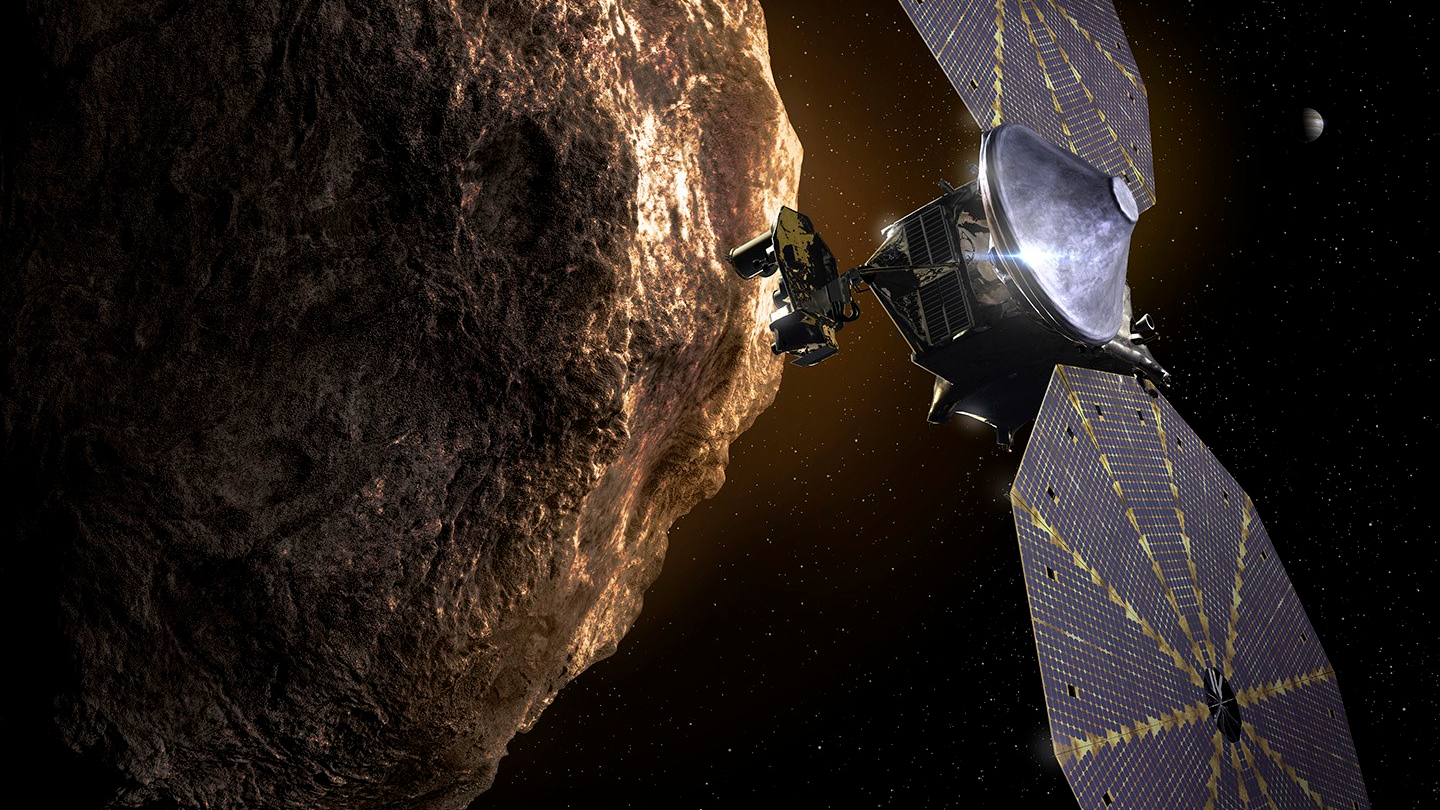Mars Odyssey celebrates 100,000 orbits, captures epic view of solar system's largest volcano
"We just decided to turn the camera on and see how it looked."

NASA's Odyssey spacecraft, the longest-running mission at Mars, circled the Red Planet for the 100,000th time today, the mission team announced in a statement.
To celebrate the milestone, the space agency released an intricate panorama of Olympus Mons, the tallest volcano in the solar system; Odyssey captured the view in March. The volcano's base sprawls 373 miles (600 kilometers) near the Martian equator while it soars 17 miles (27 kilometers) into the planet's thin air. Earlier this month, astronomers discovered ephemeral morning frost coating the volcano's top for a few hours every day, offering fresh insights into how ice from the poles circulates throughout the parched world.
In Odyssey's latest image of the volcano, the bluish-white band seen grazing Olympus Mons shows the amount of dust floating in the Martian air when the image was taken, according to NASA. The thin coat of purple just above likely hints at a mixture of atmospheric dust with bluish water-ice clouds. The blue-green layer at the top-edge of the world marks where water-ice clouds reach up about 30 miles (48 kilometers) into the Martian sky, scientists say.
To capture the latest panorama, scientists commanded Odyssey to slowly rotate such that its camera pointed toward the Martian horizon, capturing views similar to the kind International Space Station dwellers take of Earth.
Related: Giant Mars mountain Olympus Mons may once have been a volcanic island
"Normally we see Olympus Mons in narrow strips from above, but by turning the spacecraft toward the horizon we can see in a single image how large it looms over the landscape," Jeffrey Plaut, who is Odyssey's project scientist at the Jet Propulsion Laboratory (JPL) in California, said in the recent news release. "Not only is the image spectacular, it also provides us with unique science data."
By snapping similar images at different times during the year, scientists can study how the Martian atmosphere changes over the planet's four seasons, which last from four to seven months each.
Get the Space.com Newsletter
Breaking space news, the latest updates on rocket launches, skywatching events and more!
Scientists say the groundwork for the latest image began as early as 2008, when another NASA mission named Phoenix landed on Mars. When Odyssey, which served as a communication link between the lander and Earth, pointed its antenna at the lander, scientists noticed its camera was able to view Mars' horizon.

"We just decided to turn the camera on and see how it looked," said Steve Sanders, who serves as Odyssey's mission operations spacecraft engineer at Lockheed Martin Space in Denver, Colorado. "Based on those experiments, we designed a sequence that keeps [the camera's] field-of-view centered on the horizon as we go around the planet."
The Odyssey mission launched in April 2001 and is managed by JPL. It was NASA's first successful mission to Mars after a pair of failures two years earlier. In 1998, the Mars Climate Orbiter reportedly burned up in Mars' atmosphere after mission engineers mixed up translations between two measurement systems. A year later, the Mars Polar Lander smashed onto the Martian surface due to its engine abruptly shutting off prior to touchdown. Odyssey was therefore widely viewed as a mission of redemption.
Odyssey slid into an orbit around Mars in October 2001, and has since revealed previously hidden water-ice reservoirs just beneath the planet's surface, which may be within reach of future Mars astronauts. The spacecraft also mapped vast swaths of the planet's surface, including its craters, which have helped astronomers decode Mars' history.
The spacecraft's recent milestone of 100,000 orbits means it has covered over 1.4 billion miles (2.2 billion kilometers). The sun-powered spacecraft does not have a fuel gauge, so the mission team relies on their math skills to estimate leftover fuel that keeps the 23-year-old mission running. "Physics does a lot of the hard work for us," said Sanders. "But it's the subtleties we have to manage again and again."
Recent calculations suggest Odyssey has about 9 pounds (4 kilograms) of propellant remaining, which is sufficient to last the legacy mission until the end of 2025.
"It takes careful monitoring to keep a mission going this long while maintaining a historical timeline of scientific planning and execution — and innovative engineering practices," said Joseph Hunt, Odyssey's project manager at JPL. "We're looking forward to collecting more great science in the years ahead."
Join our Space Forums to keep talking space on the latest missions, night sky and more! And if you have a news tip, correction or comment, let us know at: community@space.com.

Sharmila Kuthunur is a Seattle-based science journalist focusing on astronomy and space exploration. Her work has also appeared in Scientific American, Astronomy and Live Science, among other publications. She has earned a master's degree in journalism from Northeastern University in Boston. Follow her on BlueSky @skuthunur.bsky.social









